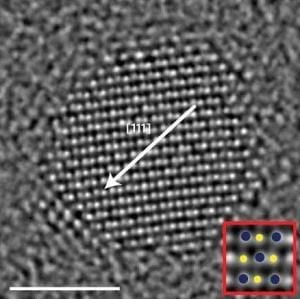
Promising news for those who relish the prospects of a one-inch chip storing multiple terabytes of data
Some clarity has been brought to the here-to-fore confusing physics of ferroelectric nanomaterials. A multi-institutional team of researchers, led by scientists at the U.S. Department of Energy (DOE)’s Lawrence Berkeley National Laboratory (Berkeley Lab) has provided the first atomic-scale insights into the ferroelectric properties of nanocrystals. This information will be critical for development of the next generation of nonvolatile data storage devices.
Working with the world’s most powerful transmission electron microscope, the researchers mapped the ferroelectric structural distortions in nanocrystals of germanium telluride, a semiconductor, and barium titanate, an insulator. This data was then combined with data from electron holographic polarization imaging to yield detailed information on the polarization structures and scaling limits of ferroelectric order on the nanoscale.
“As we scale down our device technology from the microscale to the nanoscale, we need a better understanding of how critical material properties, such as ferroelectric behavior, are impacted,” says Paul Alivisatos, director of Berkeley Lab and one of the principal investigators in this research. “Our results provide a pathway to unraveling the fundamental physics of nanoscale ferroelectricity at the smallest possible size scales.”
via Science Daily
The Latest Streaming News: Nanoscale Data Storage updated minute-by-minute







